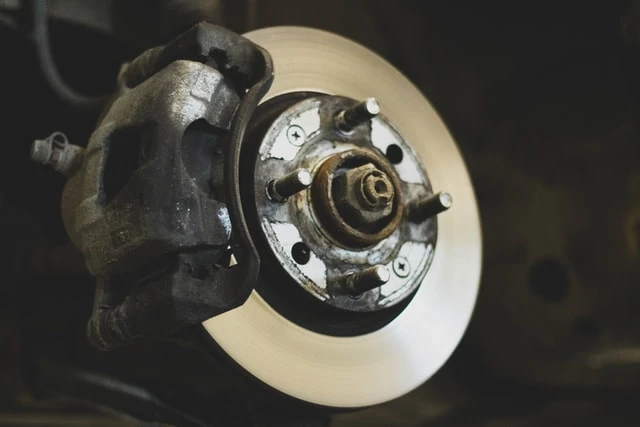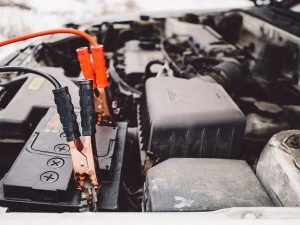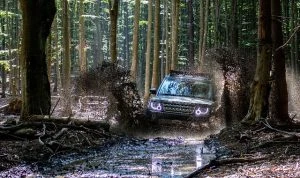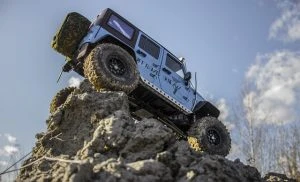Technical
The Art of Braking
It goes without saying that there are a number of different braking technologies incorporated in the latest range of cars on the market. They might fly under the radar, if anything, but all those acronyms are more than just an abbreviation, they are a life-saving invention designed to look after you and your family’s safety.
So, what are the different types of braking technology?

The First Step: ABS
One of the early systems introduced into cars was ABS. This was something that the industry latched onto and proudly trumpeted. ABS is Anti-lock Braking System.
Before ABS arrived there were two kinds of braking styles. Most of the time it was hard on the brake pedal and look out for black smoky trails. Or there was the canny driver that would “feather” the pedal and raise and lower the braking foot to not lock up the brakes.
ABS does the same thing as the second technique, albeit faster than we could ever hope to achieve. Computer controlled sensors will have the brake pads grip and release the brake discs, slowing forward progress but not stopping the whole wheel from rotating or locking up. This increases your control over the car’s handling.
Early versions of ABS had all four wheels controlled by one or two sensors, however, it’s pretty standard now that each wheel’s brake is controlled independently.
Meanwhile, TC refers to Traction Control. A long time ago, when manual gearboxes, thirsty engines, and a heavy right foot would combine to perform a “burnout”, where the grip or traction of a tyre became less than the intended design, they’d spin and the heat would warm the rubber to a point where the tyre would begin to smoke.
Traction Control stops this from happening. Whether it’s intentional, or in the case of either climbing a wet bitumen road, or turning a sharp corner at slow speed then accelerating, a computer sensor steps in and reduces power momentarily to reduce the lack of traction.
New Braking Technology
Today, a wide range of advanced technologies are designed to improve braking efficiency and enhance overall vehicle safety. One of these features includes ESP/VSC (Electronic Stability Program or Vehicle Stability Control). It is also referred to as DSC (Dynamic Stability Control) or ESC (Electronic Stability Control).
In essence, each of these systems do the same thing. They combine with Traction Control and rely on electronic sensors to measure wheel rotation speed, the direction of travel of the vehicle, the angle of the vehicle, and if a pre-programmed point of no return might be reached. At this point, the stability program will apply brakes to the wheel, or wheels it deems require assistance.
This can be done without the driver’s knowledge. For example, on a wet and slippery road, the system may quietly work in the background by gently applying braking force. In effect, the system helps the car stay on a straighter, tighter, driving line.
EBD, or Electronic Brake Distribution, is a form of brake technology that automatically varies the amount of force applied to each of a vehicle’s wheels, based on road conditions, speed, and loading. It works hand-in-hand with ABS.
Finally, there’s Brake Assist, which provides extra braking pressure if the car’s onboard computers think that it is required. In today’s cars, this tends to be partnered with a forward-looking sensor setup and cruise control.
ICE Batteries And EV Batteries

Anybody who’s left the lights on in their car overnight or helped a mate push-start a sulky ICE vehicle knows only too well that all cars have batteries, not just EVs. So you might be wondering about what the big deal about battery life and battery fires and battery range is all about. To understand this, it’s time to go back to basics and to look at what a battery is and how it works.
Your bog-standard battery in an ICE vehicle is a lead–acid battery – the lead is why it’s so heavy, and the acid is why the batteries are “interesting” to dispose of, as the acid in question is often H2SO4 or sulphuric acid. Car batteries were a very welcome replacement to the old-fashioned method of getting the motor started with a crank handle. These lead–acid batteries are rechargeable, as the petrol or diesel motor handily charges them back up. This is why you can drive for hours and hours with the headlights on at night without the battery going flat, but if you leave lights on overnight, it will go flat.
In a lead–acid battery, both the anode (the bit that produces the positive charge) and the cathode (the bit that produces a negative charge) are made from lead and lead dioxide, respectively. The electrolyte (the bit that gets the electrons flowing thanks to chemical reactions) is sulphuric acid. Hook this up to a circuit and the electrons whizz around it in an attempt to get into balance, creating electrical current that we can use to, say, create a controlled explosion to power a vehicle. Most batteries also contain separators that stop the anodes and cathodes touching each other, which can happen if dendrites (branching crystals) start to form. If you want to get really technical, a battery is made up of a lot of individual cells containing an anode, a cathode and the electrolyte. In fact, that’s why a battery is called a battery – it reminded the early inventors of an array of cannons or other weapons ready to fire. The batteries can last for years, especially if turned over regularly and cared for properly (and that’s another subject for another day).
The basic design of a lithium-ion battery (LIB) inside an EV is similar. It’s got an anode, a cathode, an electrolyte and a separator. In this case, the cathode is made from more exotic metals and oxides, such as lithium cobalt oxide, lithium nickel cobalt manganese oxide and lithium nickel cobalt aluminium oxide (try saying that quickly!), and their conductivity is improved by mixing them with conductive black carbon. The anode is usually made of graphite. The electrolyte has more lithium, specifically lithium salts dissolved in organic solvents that have plenty of the lithium ions that give the batteries their name. These batteries are a lot lighter than lead–acid batteries and can deliver a lot of punch. They also have a longer lifespan than other types of rechargeable battery, such as ni–cad (nickel–cadmium) batteries and don’t have the problem of “memory”.
The problem with lithium batteries is that the electrolyte is very, very flammable. The lithium is also prone to growing dendrites, which can cause short-circuits (and thus fires), especially if it’s charged too fast, overcharged or charged at too low a temperature. Lithium also gets prone to throwing a dramatic wobbly if it gets too hot or if the battery is damaged. It’s a case of the lithium’s strengths – its unstable chemistry that allows it to generate a charge – being its greatest weakness.
Lithium-ion batteries haven’t been around for as long as lead–acid batteries, as they only came on the scene in the 1960s and were popularised by Sony in the late 1980s. The lead–acid battery, however, has been around since the 1880s. In other words, it’s early days for lithium-ion batteries, and they’re working hard to improve the batteries and make them better.
But what happens when the batteries come to the end of their lives, which is inevitable? This is more of an issue with lithium batteries, as lithium is a much rarer metal, whereas lead is pretty common and humans have been playing around with it for millennia, although it’s now not used as much in common products (except for batteries) because of the health hazards.
The good news is that both types of battery can be recycled. It is possible for both metals – lead and lithium – to be cleaned up and used in new batteries. In fact, if you have an old battery of either type, then the best thing to do is to take it down to your nearest recycling centre and get it dealt with. Otherwise, both types can be a bit nasty, although the nastiness of lithium is more dramatic (fires) than that of lead (slow poisoning). Most lead in the batteries can be recycled; once again, the rate of recycling of lithium is a bit behind, most because it’s still a young technology. The acid inside a lead–acid battery can easily be neutralized or put to other uses, including making fertilizer.
4WD and AWD

Getting the best grip on the road or terrain is what will get you moving forwards from A to B in the shortest time. Ever since the invention of the first cars, two-wheel-drive has been the mainstay for delivering the engine’s power out to the wheels. At first, two-wheel drive was usually via the rear wheels, as it was much simpler to run a drive shaft from the engine at the front of the car back to the rear wheels to get grip from the rear wheels and to let the front wheels have the job of steering the vehicle.
In saying that, there is also history of 4WD being experimented with back as early as the late 1800s in combination with a traction engine, and, of course, in World War II, the 4WD Willys Jeep was a game-changer.

Once mechanical engineering and quality improved over time, the concept of having the engine over the front axle and the front wheels as the driving wheels as well as for steering the vehicle lowered production costs. A combination of rear-wheel-drive and front-wheel-drive cars were available as a matter of course right up to the 1970s and 1980s. Through the 1990s up until the present day, it was more common to see front-wheel-drive cars for everyday driving.
However, it was the 1980s that proved to be a very innovative period in automotive design and mechanical engineering. The greatest advancement in road-going cars was arguably the use of four-wheel-drive to establish greater levels of grip. As racing and supercars demanded faster cars, the need to control all that power (and actually make better use of it) was essential for winning, especially as there was an ever-increasing number of high-performance cars being pulled out of roadside hedges or being wrapped around power poles.
Enter Audi. Audi’s Quattro technology marked a significant moment in high-performance cars’ and supercars’ history. The Audi Quattro’s technology was essentially the dawn of the modern supercar’s 4WD system, and when Audi entered the World Rally Championship in 1981 with their Audi 80 Quattro car, they were unbeatable. The second-place car was over twenty minutes behind the race-winning Audi!
What is the difference between 4WD and AWD?
This is a good question to answer, because there are numerous new cars of all shapes and sizes available with AWD or 4WD. Generally speaking, four-wheel-drive (4WD) is the older off-road system that has the power split 50:50 front to rear. Add a diff-lock into a 4WD system, and these are off-road kings. Four-wheel-drive can be disengaged so that just two-wheel-drive (2WD) can be used on easier terrain, including for when you’ve finished your off-road adventure and you just want to head back home on the tarmac with 2WD only.
The basic principle of an all-wheel-drive (AWD) system is that it can deliver the optimum level of torque to each wheel individually, thus giving the best possible drive and traction. AWD systems tend to be permanently engaged, but with the power split front to rear, along with individual wheels being variable according to what each wheel is sensing and therefore demanding at the time. AWD systems are more complex in that they use sensors which send precise information and values of each wheels’ speed, torque, wheel slip/spin, brake pressure, and steering input to the AWD’s central control system. The control system then adjusts the torque supplied to each wheel.
Land Rovers and many other new serious off-road vehicles use AWD systems with various diff-locking abilities, which also make them real off-road kings. Four-wheel-drive systems are simpler in nature and are thus simpler and cheaper to fix than more complex AWDs. That said, many manufactures like Subaru know how to make solid, dependable AWD systems for their cars and SUVs that are mainly aimed at everyday on-road use and trips up to the ski fields, but with the credentials for performing well even in some fairly serious off-road terrain.
If you live in a part of the world where gravel roads and rainy seasons collide, then an AWD vehicle with decent ground clearance should be parked up your driveway. If your day includes a trek out to the building site, feeding out to stock, or traversing any serious off-road terrain, then a heavy-duty 4WD or AWD vehicle will be your companion. The good news is there are plenty of these sorts of vehicles about, many of which can be bought new at a good price via Private Fleet.

How Does Cruise Control Work?
Cruise control is a popular feature in just about all of today’s cars allowing you to maintain a constant speed without having to manually control the accelerator. While first rolled out in the late 1950s, the tech has evolved significantly over recent decades.
The Mechanics of Cruise Control
In short, cruise control relies on several key components: the actuator, the speed sensor, and the control module. Starting with the actuator, this component adjusts the accelerator accordingly, either increasing or decreasing engine power to keep the vehicle at the nominated speed. The speed sensor is responsible for monitoring the vehicle’s speed and sending this data to the control module. In turn, the control module processes this information and determines the necessary adjustments to maintain the designated speed.
When a driver activates cruise control and sets a desired speed, the system gains control of acceleration. The speed sensor continuously monitors the vehicle’s speed and sends real-time data to the control module. As such, if the vehicle’s speed drops below the desired speed, like when driving up a hill, the control module signals the actuator to increase acceleration and boost engine power. On the other hand, if the vehicle starts to exceed the set speed, such as when going downhill, the control module effectively eases the power.

Adaptive Cruise Control
In some cases, like adaptive cruise control, the control module may actually activate the brakes to reduce your driving speed if necessary. In higher-end cars, adaptive cruise control can even bring a vehicle to a complete stop and subsequently increase your driving speed when traffic conditions allow.
The main difference with adaptive cruise control is the functionality. Adaptive cruise control uses radar or laser sensors to detect the distance to the vehicle ahead. It automatically adjusts the speed to maintain a safe following distance, slowing down when approaching slower traffic, and speeding up when the road is clear. This advancement enhances both convenience and safety, especially when it comes to diring on a busy highway.
Operating Cruise Control
The user interface for cruise control typically includes buttons on the steering wheel or a stalk on the steering column. These controls allow the driver to set the desired speed, adjust the speed up or down, and cancel or resume cruise control. Some systems also include a display that shows the set speed and other relevant information.
Keep in mind, cruise control can significantly reduce driver fatigue during long trips by allowing you to rest your foot and maintain a consistent speed. It may also support fuel efficiency since the system can manage your acceleration more smoothly, thereby optimising power output. Nonetheless, it is not to be mistaken for a replacement in remaining alert and active at the wheel.
Modern advancements make cruise control a vital tool on the road, and it goes without saying that this feature is a favourite among many, especially drivers putting in long distances on the road.